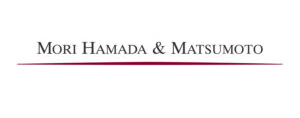In Japan, the private and the public sectors are seeking to implement self-driving services. Several companies have been announcing plans to offer self-driving services, and the Japanese government aims to introduce such services in about 50 locations in the country by March 2026.

Partner
Mori Hamada
& Matsumoto
Tokyo
Tel: +81 3 6266 8717
Email: norihito.sato@mhm-global.com
In Japan, where the population is declining, maintaining and strengthening mobility services, especially in rural areas, is seen as urgent. The government is discussing the commercialisation of technologies that support regional mobility services such as self-driving buses. To smoothly introduce those services, it is also important to clarify the applicability and interpretation of laws and regulations regarding automated vehicles, such as civil and criminal liabilities in accidents, and to improve the predictability of legal risks. The government is discussing those legal issues at various bodies such as the Sub-Working Group on the Examination of Social Rules Concerning Automated Vehicles within the AI Era, Digital Agency (SWG), of which an author of this article, Norihito Sato, is a member.
This article discusses the status and recent discussions regarding the legal systems related to automated vehicles in Japan.
Current laws and regulations
The laws and regulations on automated vehicles include: (1) traffic rules such as the Road Traffic Act; (2) those on the safety of vehicles, including the Road Transport Vehicles Act and the Safety Standards for Road Transport Vehicles (Safety Standards); (3) laws on civil liability in accidents, including the Automobile Liability Security Act and the Product Liability Act, and general laws such as the Civil Code; and (4) laws on criminal liability, including the Penal Code and its special law, the Act on Punishment of Acts Inflicting Death or Injury on Others by Driving a Motor Vehicle, etc.
In addition, when certain data such as in-vehicle data, which falls within the definition of personal information under the Act on the Protection of Personal Information, are obtained or used in connection with the operation of automated vehicles, the service provider obtaining or using such data should comply with that law.
This section provides an overview of the major current laws and regulations on automated vehicles in Japan.
Road Traffic Act

Senior Associate
Mori Hamada
& Matsumoto
Tokyo
Tel: +81 3 6266 8942
Email: yusuke.iino@mhm-global.com
In Japan, the Road Traffic Act provides for traffic rules, such as maximum speed limits, driving at reduced speeds and coming to a stop, and drivers’ responsibilities such as a prohibition on driving under the influence of alcohol.
The 2019 amendment to the Road Traffic Act added provisions regarding the obligations of drivers using automated driving systems and the need for data recorders for the operating status of automated driving systems. Together with the amendment to the Road Transport Vehicle Act, the Road Traffic Act established provisions for level 3 automated vehicles, which can be deployed on public roads.
In addition, the 2022 amendment to the Road Traffic Act introduced a permit mechanism for a specified automated driving, which is equivalent to level 4 automated driving without a human driver. The service provider must obtain the permission of the relevant local public safety commission. This permit mechanism applies only to transport services such as buses, taxis and trucks monitored remotely.
Road Transport Vehicle Act and safety standards
The Road Transport Vehicle Act stipulates the safety standards, which are technical standards for safety, pollution prevention and other environmental preservation. For example, the standards specify how to measure fuel consumption. Only vehicles that conform to the safety standards may be operated on public roads.
The 2019 revision of the Road Transport Vehicle Act subjected automated driving systems equivalent to level 3 or higher to the safety standards. In addition, a system was established to grant operational design domain (ODD) if the Ministry of Land, Infrastructure, Transport and Tourism (MLIT) determines that the performance of automated driving systems under certain conditions meets the safety standards.
At the same time, the safety standards for automated driving systems were also established. For example, automated driving systems must not interfere with the safety of other traffic while in operation, and must ensure the safety of occupants.
In September 2018, before the 2019 revision, the MLIT established guidelines for safety requirements that level 3 and 4 automated vehicles must meet, to promote the development and commercialisation of safe automated vehicles. In the guidelines, one vehicle safety requirement states that “automated vehicles must prevent reasonably foreseeable and preventable accidents involving bodily injury in the operational design domain (ODD) of automated vehicles.”
Road Transportation Act, Act on Motor Vehicle Cargo
Regarding the Road Transportation Act and the Act on Motor Vehicle Cargo Transportation Services, which regulate the business of transporting passengers and freight, the relevant ministerial ordinances were amended in 2023. The amendment newly stipulated measures to ensure transportation safety and the procedures to be taken when carriers conduct business using automated vehicles. Specifically, carriers are required at all times to have automated-driving-safety personnel, who are responsible for ensuring the safety of operation of automated vehicles but are not responsible for always monitoring the surroundings of the vehicles as these personnel are not drivers.
Civil liability
The Automobile Liability Security Act provides for special provisions against general tort liability under the Civil Code with respect to traffic accidents involving automobiles. Under the Civil Code, the victim (claimant) must allege and prove the negligence of the offender (obligor).
In contrast, under the act, vehicle owners will be liable for bodily injuries of third parties unless they prove that they are exempt from liability, such as:
(1) no fault of the owners and drivers; and (2) non-defect of the vehicles.
Such liability is covered by the mandatory insurance of owners up to a certain amount, and if the accident is caused by a defect in the car, the owner will be liable, and the insurance company will pay the victim’s insurance claim. In turn, the insurance company will claim compensation from the manufacturer.
In 2018, the MLIT published a report discussing how civil liability, including liability based on the act, is applied in the case of automated-vehicle accidents. The report concluded that civil liability under the act should be maintained to achieve prompt victim relief and stable operation of the existing insurance system. On the other hand, since it is practically difficult for insurance companies that have paid insurance to seek compensation from automobile manufacturers for damages caused by automobile defects, it is necessary to consider a mechanism that allows insurance companies to effectively seek such compensation.
Under the Product Liability Act, victims (claimants) can claim damages even without proving the manufacturer’s negligence if they allege and prove the existence of a defect in the product. However, “product” does not include software, and product liability under this law does not apply to a defect in the software itself. In addition, whether a defect exists is determined at the time of the delivery of the product, even if the software is updated several years after delivery. These points should be legally addressed for the law to effectively benefit the victims.
Criminal liability
Japan has a special statute that punishes automobile accidents more severely than negligent homicide or unintentional injury under the Penal Code. There is no precedent regarding whether the special statute, negligent homicide or unintentional injury under the Penal Code applies in the case of automated vehicles.
The special statute generally assumes that human drivers have obligations and, thus, is unlikely to apply to automated vehicles. As it is not clear how negligent homicide or unintentional injury under the Penal Code applies, the Japanese government is discussing how the predictability of criminal liability can be improved.
Outlook
The Japanese government established the SWG, the digital agency, to discuss legal issues including legal liability in the event of accidents, and discussions are underway. The SWG is discussing short and long-term issues, and the direction that should be taken from the perspectives of: (1) ensuring full redress for victims; and (2) promoting responsible operation of automated vehicles using advanced technologies, with the aim of reaching a consensus by around May 2024.
Accident-investigation and data-sharing mechanisms are also being discussed in the SWG to promote social acceptance of automated vehicles. In the mid to long term, the discussion may lead to legal liability not only in relation to automated vehicles, but also in relation to AI technology in general. The conclusions of the SWG will be considered important as they will indicate the future direction of laws and regulations related to automated vehicles in Japan.
MORI HAMADA & MATSUMOTO
16th Floor, Marunouchi Park Building
2-6-1 Marunouchi, Chiyoda-ku
Tokyo 100-8222, Japan
Tel: +81 3 6212 8330
Email: mhm_info@mhm-global.com
































